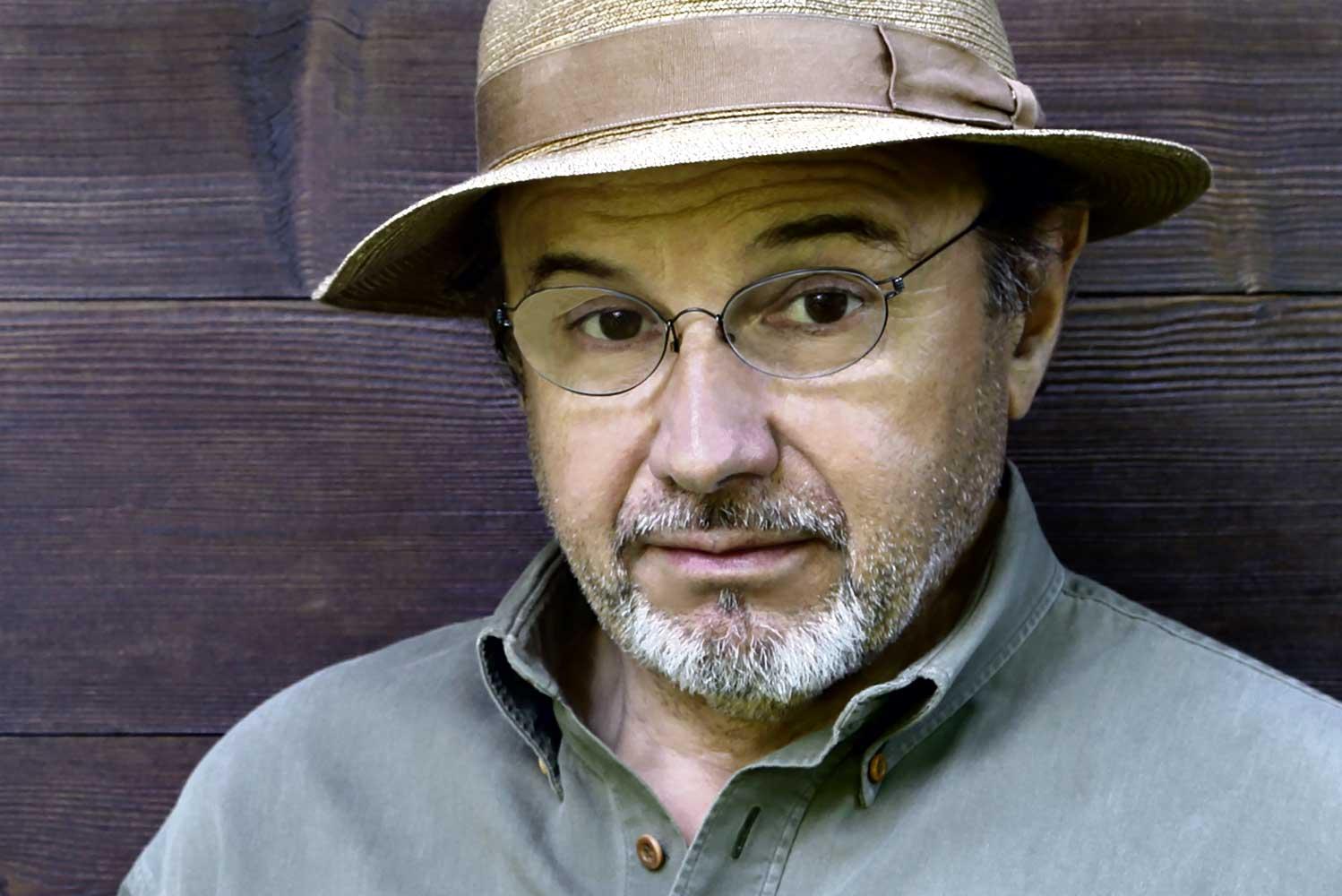The real fake
21.02.2018 Arts & CulturePartly inspired by Wispile, Massard’s magnum opus, Noah’s Ark, will be featured in February in an exhibition of his most spectacular works involving the Saanenland.
Massard will let you in on a little secret immediately – he’s a self-described “fake”. Those immense waterfalls and detailed forests of leafy trees? Fake. Just try finding them here in the mountains. Though at first glance his art appears to be photographs of exceptional locations, perhaps with digital adjustments in programmes like Photoshop, this surprisingly isn’t the case. Instead, Massard envisions a world of his own, constructing everything from scratch.
What the audience sees in his photographs is entirely handmade miniatures using paper and fabrics, amongst many other different materials. Rocks are made of styrofoam; trees may be fashioned out of cotton or cardboard. Lighting is very important as well – which Massard describes as a miniature set, lit very carefully and then captured in a traditional photograph. Absolutely no digital is used in the process, using only personal techniques to generate the right mood for the photograph, including taking several exposures on the same film.
Diorama pioneer
Massard began his career at the French Cinemathèque and evolved into traditional photography. At first Massard did mostly studio shooting, then worked for various magazines and companies in France. Always interested in landscapes, he started shooting them as a hobby. According to Massard they take a special – very mental and humble – approach.
“You have to accept that sometimes you get what you’re looking for, and sometimes you do not, with nature,” says Massard, who started setting up “nature” shoots of what was in his imagination.
When Massard began his innovative works decades ago, he believes people in France didn’t really understand the medium. He was unable to be labelled a photographer, designer or creator, leading to confusion amongst the public.
A friend in NY introduced Massard’s work to galleries and collectors, in the avant-garde atmosphere popular at the time. In 1996, well-known gallerist Julie Saul made the first solo show of his work, and his career exploded. Though expecting disaster, the New York Times Roberta Smith – known as one of the harshest critics – said beautiful things about his work. This came as a huge surprise to him. Quentin Bajac, the current director of the photography department of the New York MOMA, who was at the time the director of the same department of the Musée d’Orsay, was one of Massard’s first supporters in France and wrote on his work, helping to propel his career to further heights.
“Except for Cartier Bresson and very classical black and white photography, the art form was not so popular in France,” Massard bemoans. “The US was really the pioneer of the art.”
Massard then had the rare opportunity to not just work for others, making their visions into reality, but to create his own. He kept important clients like Hermès but focused his career on his art rather than on commercial photography. Now, as a recognised artist, his work is popular not only throughout the US and France but in many other countries around the world.
First local show
Carolyn Freymond will present 15 of Massard’s artworks at Chalet Farb in Saanen in a retrospective entitled Paysages Imaginaires, comprised of both his early and most recent works. The idea behind the exhibition is to show Massard’s works that have a direct relationship with the Saanenland. While Massard is a Parisian, born and bred, he has long ties to the Saanenland. He has been coming here for over 45 years.
While the process of creation takes several months for one single image, Noah’s Ark is Massard’s longest project yet – it took him a full six months to achieve. As Massard points out, traditional Ark iconography shows the animals boarding the ship at a dramatic moment, often from behind. The other frequent option is to show the animals packed aboard at sea, with just their heads visible. But Massard, yet again, defies tradition.
“I was interested in the moment when all the animals were finally out and savouring their newfound freedom,” explains Massard. “Last summer, incredible storms tore through Gstaad creating flash flooding, so this provided some of the inspiration.”
Supposedly, at the end of the Ark’s historic journey, it landed on Mount Ararat, but in Massard’s work, it’s the Saanenland. The mountain he has created bares a stunning resemblance to Wispile. All the animals are reproductions found in natural history books and magazines, and all are made of paper.
Old-fashioned challenges
While Massard works in a traditional manner, this is getting more and more difficult as photography changes. Kodak, for example, stopped production of his favourite film, and he has to adapt to stay faithful to his art without the aid of modern technology.
“The most important thing is enjoying what I do and having a little fun doing it,” insists Massard. “Otherwise I couldn’t spend so many months creating each individual piece.”
The Freymond Paysages Imaginaires exhibition runs from 18 February to 3 March.
Alexis Munier
www.didiermassard.net
www.saulgallery.com
www.kopeikingallery.com






